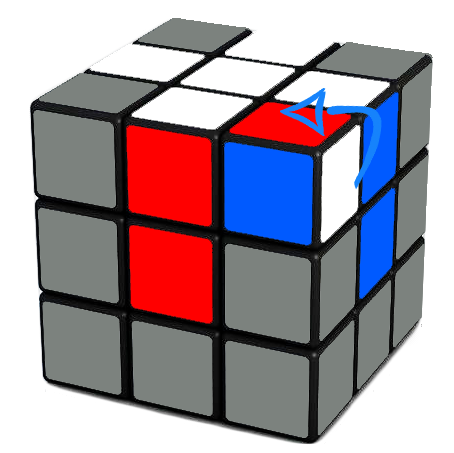

You can repeat this algorithm until all the colours match with the face. Situation 3: If two opposite pieces match then keep the unsolved piece to top left by rotating the top layer and apply the algorithm. Situation 2: If two corner pieces are solved then keep them vertical to your right and then apply the algorithm. Situation 1: If only one corner is matched then you have to keep that piece to the top left and apply the algorithm. You can encounter the following situations while applying this algorithm. Note: Remember to hold the cube in such a way that the unsolved corner is at the top left position. For this step, you must use the Sune algorithm. You then need to get all the yellow coloured pieces facing upwards. You can repeat the algorithm until you get the yellow cross on the top. Once you have executed the algorithm, you would have a yellow cross on the face.

In either of the cases, you can use this algorithmĤ. Situation 1: You would encounter a dot in the centre of the face. However, you would now be in one out of three situations. Now that you are done solving two layers of the Rubik’s Cube, you need to solve the third or the last layer. This will help you finish solving the second layer.

You can repeat this algorithm until you get the desired edge colours placed in accordance with the colour of the centrepiece. These algorithms will help you get the desired edges into their positions. Situation 2: If the edge piece should be placed at the back.ħ. Situation 1: If the edge piece should be placed in front.ġ. To position your pieces correctly, you must keep that face to your right, then see if it should be placed in front or at the back. Remember that the colour of the piece that you are looking for should match with the centre. Therefore, you need to first search for the edges. However, instead of four corners, it now encompasses four edges.

Similar to the first step, solving the second layer also involves four pieces. This will bring the piece above its position and repeating the algorithm a few times will bring the piece in its right position.
#Rubiks cube flip corners how to#
To learn how to solve a Rubik’s Cube, you can watch our step by step tutorial Parity Algorithm: R U' R' U' R U R D R' U' R D' R' U2 R' U' Use this between solving corners and solving edges, if you have memorized an odd number of letters for both.Back Face (the side facing away from you) Note: The number of letters for corners/edges must always be both even or both odd. *If the number of letters memorized for edges/corners are both odd, then do the parity algorithm between solving edges and solving corners. Solving After Memorization Solve the edges, possibly solve parity*, and then solve the corners. Note: If you are just starting out, you can write down the letters to avoid memorization mistakes. This is much easier to memorize than a sequence of 12 random letters! Another example is shown at the end of the tutorial video. A very quick star falls out of the sky, takes out its Nexus phone to photograph an ivy plant, prints the photo, and realizes the plant was actually dead. Example for edges: QUick Sta R Ne Xus IVy PRint DEad. Next, make a story out of all the images. To memorize a sequence of letters, pair them up as shown above, and memorize an image for each letter pair. Letters memorized for edges: QU SR NX IV PR DE Letters memorized for corners: MW QX MD UI VP Note: The number of letters for corners/edges must always be both even or both odd. Memorize VP, as the sticker at V belongs at P.


 0 kommentar(er)
0 kommentar(er)
